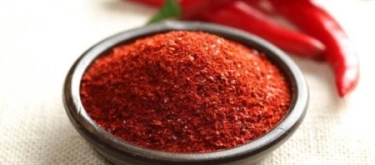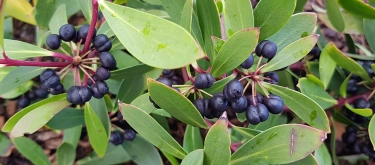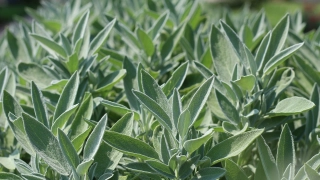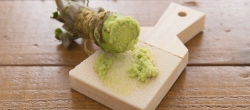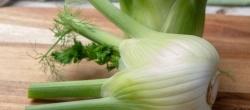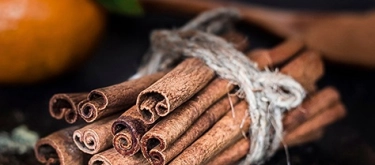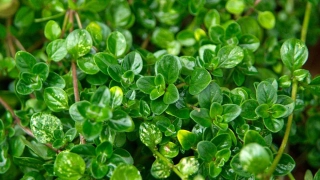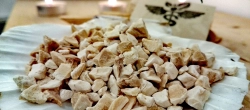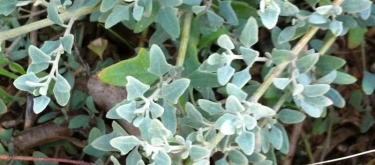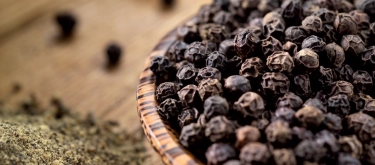Achiote (Annatto): Taste Profile, Aroma, Benefits and Health Risks
Achiote, also known as annatto, comes from the seeds of the Bixa orellana tree, native to tropical regions of the Americas. Traditionally valued for its vibrant red-orange color and subtle earthy flavor, achiote has played an essential role in Latin American, Caribbean, and Filipino cuisines for centuries. Used as both a spice and a natural food dye, achiote brings color, aroma, and a touch of complexity to a wide range of dishes.
Achiote (annatto) is naturally gluten-free, vegan, and vegetarian. It is generally well-tolerated, but rare allergic reactions have been reported, particularly in individuals sensitive to food colorants or certain seeds. Annatto is low in calories and does not contain major allergens. Always check ingredient lists in commercial products for additives or cross-contamination.
What does Achiote (Annatto) taste like?
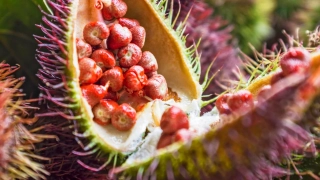
Complete Sensory Description
Achiote has a mild, earthy, and slightly peppery flavor, with subtle notes of nuttiness and a faint hint of bitterness.
The first impression is a gentle, warm earthiness with a soft peppery undertone. As it infuses into dishes, achiote releases a delicate aroma—woody, slightly floral, and reminiscent of dried herbs. When used in larger quantities, a faint astringency and a soft, mineral aftertaste may develop, but the overall flavor remains mild and non-intrusive. The most striking feature is its vivid reddish-orange hue, which visually transforms foods without overpowering their natural taste.
In-depth Flavor Analysis
Achiote’s flavor profile is shaped by unique compounds, including bixin and norbixin (responsible for its color), as well as trace amounts of terpenes and phenolic substances that contribute mild spiciness and earthy nuances. Unlike pungent spices, annatto does not deliver heat but provides an underlying savoriness and subtle complexity. The mild bitterness and mineral notes become more noticeable when achiote is ground fresh or used in concentrated pastes.
Culinary Uses and Forms of Consumption
Whole seeds:
Achiote seeds are often toasted and ground before use, releasing their aroma and deepening flavor. They are sometimes used whole to infuse oils or broths, which are then strained to impart color and a gentle earthiness.
Achiote oil (annatto oil):
One of the most common uses is to simmer achiote seeds in oil or lard, creating a vibrant orange-red cooking oil. This infused oil is used for sautéing, frying, or drizzling over finished dishes, providing color and subtle flavor without overpowering the food.
Ground or paste form:
Ground achiote or prepared achiote paste is widely used as a seasoning and marinade. In Latin American cuisines, it is an essential component of spice blends (recado rojo, sazón), used to marinate meats (such as cochinita pibil), fish, or poultry, and added to rice, stews, and beans. The paste often includes garlic, vinegar, cumin, and citrus, enhancing both color and complexity.
Natural colorant:
Annatto is a traditional natural dye for cheeses (cheddar, Red Leicester), butter, margarine, and baked goods. It is used in both artisanal and commercial food production to give a yellow or orange tint.
Not recommended:
Annatto’s subtle flavor can be lost in highly spicy or intensely seasoned dishes. Using excessive amounts may impart unwanted bitterness or grittiness.
Selection, Preparation, and Storage
Selection:
Choose achiote seeds that are dry, uniform in color, and free from mold or moisture. Ground annatto and pastes should be bright and aromatic, without mustiness.
Preparation:
For homemade infusions, gently heat seeds in oil until the color is released, then strain before use. Grind seeds just before cooking for maximum flavor, or use prepared pastes for convenience.
Storage:
Store whole seeds, ground powder, or paste in an airtight container in a cool, dark place. Properly stored, achiote keeps its flavor and color for several months.
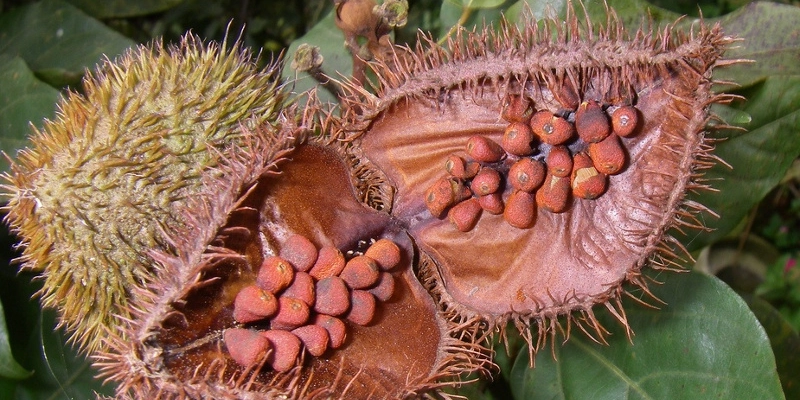
Nutritional Insights
Achiote is low in calories, fat, and carbohydrates. It contains significant carotenoid pigments, especially bixin, which act as antioxidants. Annatto also provides trace minerals such as calcium, magnesium, and potassium.
Potential benefits:
-
Provides antioxidant protection from carotenoids, supporting cell health
-
Traditionally believed to aid digestion and reduce inflammation
-
Suitable for low-calorie and plant-based diets
Historical and Cultural Significance
Achiote has been cultivated and used in Central and South America since pre-Columbian times. Indigenous peoples prized it as both a culinary spice and a body paint for rituals, festivals, and personal adornment. Spanish explorers introduced achiote to Europe, where it became popular as a food colorant. Today, achiote remains a defining ingredient in Mexican, Caribbean, and Filipino cuisine, featured in traditional dishes such as cochinita pibil, arroz con pollo, and kare-kare. Its vibrant color and cultural symbolism make it a staple in both home kitchens and ceremonial feasts.
Interesting and Curious Facts
-
Annatto is sometimes called “the lipstick tree” because indigenous groups used it as a natural cosmetic and sunblock.
-
It is one of the oldest known natural food colorants and is still used globally in cheese and butter production.
-
A common misconception is that annatto has a strong flavor; in reality, it is prized more for its color than its taste.
-
Annatto can cause mild allergic reactions in rare cases, sometimes mistaken for other food sensitivities.
Harm and Dietary Considerations
Annatto is safe for most people, but rare allergic reactions may occur, typically presenting as mild skin or digestive symptoms. People with known seed allergies should exercise caution. There is no caffeine, gluten, or animal product in pure annatto.
Religious Dietary Considerations
Achiote is plant-based and permitted in vegetarian, vegan, Halal, Kosher, Hindu, and Buddhist diets.
Final Thoughts & Sensory Journey
Achiote brings a gentle earthiness and brilliant color to the plate, enhancing both the look and subtle complexity of dishes across cultures and traditions.
Resources
-
Davidson, A. (2014). The Oxford Companion to Food. Oxford University Press. ISBN 978-0199677337
-
McGee, H. (2004). On Food and Cooking: The Science and Lore of the Kitchen. Scribner. ISBN 978-0684800011
-
Journal of Food Science, 2015, “Annatto: Properties, Uses and Applications”
-
Food and Agriculture Organization (FAO): “Annatto - A Natural Food Colorant”
